Diving with the Favre Leuba Deep Raider Renaissance
Into the deep we go with Favre-Leuba's rejuvenated dive watch.
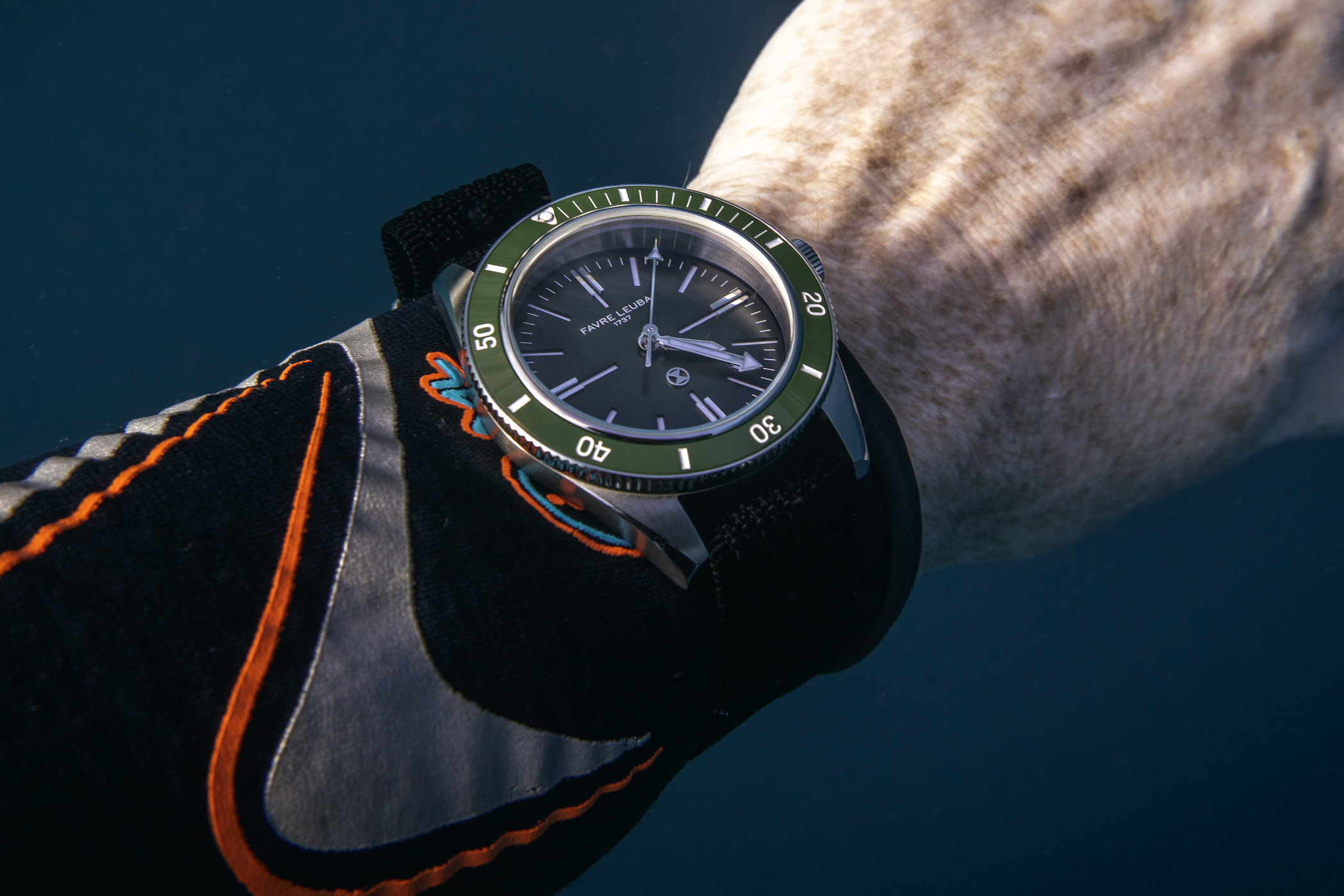
In the world of dive watches, the landscape has always been dominated by a few heavy hitters who got into the game early, made a name for themselves, and never left. Brands like Rolex, Omega, Blancpain, and Seiko have always been inextricably linked to the history of the dive watch, and with good reason. But a deeper dive (pardon the pun) into the history of the dive watch reveals that there were many others who made just as big of a splash (I can’t stop) in the early dive watch scene. Switzerland’s Favre Leuba is one of those brands, and I had the opportunity to take the Deep Raider Renaissance for a proverbial plunge!
History
The history of Favre Leuba can be traced back an astounding 307 years, to 1718. It was then that a young Abraham Favre began his watchmaking apprenticeship in Le Locle, basically the birthplace of Swiss watchmaking, at just 16 years old. By 1737, he was listed in official documents as an independent watchmaker, and around 1749, he was appointed “Maitre horloger du Locle” (Master watchmaker of Le Locle). This era would see Favre collaborate with titans of the day, such as Jacques-Frédéric Houriet (the father of Swiss chronometry) and a man who needs no introduction, Abraham-Louis Breguet, though specific details of these partnerships are sparse. History’s habit of keeping all records on paper in wooden buildings had the unfortunate side effect of frequently bursting into flames.
It’s a bit hard to track the early trajectory of the brand as there were multiple members of the family all named Abraham and Henri, but in 1815, the original Abraham Favre’s grandson, Henry-Augustus Favre, collaborated with Auguste Leuba, a member of a family of watchmakers & merchants, to create the brand name Favre-Leuba. This partnership would see the brand expand outside of Switzerland to the rest of Europe, the Americas and Asia, and also to India in 1865, where they became the first Swiss watch brand to enter the Indian market, and where they would remain popular to this day.
Favre-Leuba would spend the next 100 years operating as a successful Swiss watch brand, transitioning from pocket watches to wristwatches, regularly showing their wares at the Basel Watch Show and Salon Montres de Bijoux. In 1955, they released a trio of water-resistant watches with in-house movements called the Sea Chief, Sea Raider and Sea King. This was Favre-Leuba dipping their toes into the waterproof watch pool, leading up to the release of their very first proper dive watch in 1960, the Water Deep.
Shortly after that, Favre-Leuba went hard into the adventure watch space, releasing the famous Bivouac in 1962, the first mechanical watch to include an aneroid barometer for measuring altitude, making it an indispensable tool for mountaineers. 1964 would see the release of the Deep Blue (the precursor to the watch we are diving with today), one of the few watches to boast 200m water-resistance, a huge benchmark for that era. In 1968, they released another world-first in the Bathy, the first mechanical watch to include a depth gauge for diving. And in 1969, Favre-Leuba became a sister brand of Jaeger-LeCoultre, so if you’re really lucky, you can find some cross-branded watches out there from this era. Needless to say, the 1960s were a huge decade for Favre-Leuba.
Fast forward to the 1980s, and I bet you can guess what came next. The same sad story we have heard over and over again, the quartz crisis struck a fatal blow to Favre-Leuba, forcing the family to sell the brand after more than 250 years. The next 40 years would see the brand name change hands and relaunch several times, with varying degrees of success, but never reaching its previous levels. The most recent relaunch happened just last year in 2024, with industry veteran Patrik Hoffmann at the helm, releasing three cornerstone collections: the Chief, the Sea Sky and the Deep Raider, the watch we are here to discuss today. Now with the long and storied history out of the way, let’s get into it.
The Watch
The new Favre Leuba Deep Raider Renaissance is a 40mm stainless steel dive watch. It is loosely inspired by the Deep Blue from 1960, but decidedly more modern than vintage-inspired. Favre Leuba kindly sent us the green version for diving and review, and it’s also available in a lovely blue hue and a subdued black.
The dial of our version is a pleasing shade of green, situated somewhere between a Kelly green and a Forest green if I were forced to describe it. It has a very slight sunburst finish with a gradient that gets slightly darker as it approaches the edge of the dial. It’s constructed in a sandwich style, using cutouts for the indices that reveal a lumed layer underneath, always an interesting touch that adds a bit of depth to the dial. On that note, the lume is ample on the indices and the hands, making for a very legible watch in low-light conditions. You will find the “Favre Leuba 1737” text below the 12 o’clock position and their small hourglass-shaped logo above the 6 o’clock position. The hands are of the sword variety, and the minutes hand retains the arrow at the end, a design cue from the Deep Blue from 1960, and is a feature that I always love for inexplicable reasons. There is a circular date wheel, unobtrusively placed at the 4:30 position, and a very slightly domed sapphire crystal protects the dial.
The ceramic bezel is a matching hue of green and of the 120-click variety. There is a nice amount of knurling around the edge that provides substantial grip, and the bezel action is very nice, producing a sort of smooth clunk into each position rather than a harsh clack, and yes, those are highly technical bezel terms. The case itself is mostly a brushed finish with a few touches of polish and some chamfered edges, adding just a bit of elegance, perfect for the standard post-dive tuxedo dinner.
The movement at the core of this timepiece is the FLD02. This appears to be based on the La Joux-Perret G100, as that is the movement these were originally launched with, but details on any changes are sparse. Regardless of the name, the specs are very solid; this is a time and date automatic movement beating at 28,800vph with an excellent power reserve of 68 hours. The finishing on the movement is also very well done and meticulous, featuring Côtes de Genève on the main plate and Soleillage on the custom, skeletonised rotor. This is all visible through a sapphire display caseback, a rarity on a 300m water-resistant dive watch, but a welcome addition here as the movement is lovely to look at. These watches are available on colour-matched rubber straps or a very well-made 3-link bracelet with a butterfly clasp and quick-release spring bars, as our review model was delivered.
On the Wrist
On the wrist, the watch is superb and extremely comfortable on the bracelet. The 40mm diameter and 12.5mm thickness are squarely in the Goldilocks zone for most wrists. The bezel is quite useful in timing various things throughout the day, and the watch does a great job of straddling the line between toolish-ly rugged and elegantly chic, which is no easy task. You could truly wear it to the beach and then to a wedding, as cliché as that is to say these days. The entire package feels very well-made and extremely solid, from the bracelet to the bezel action to the crown’s winding and setting motions.
My sole complaint would be that the butterfly clasp of the bracelet doesn’t allow for a dive extension, but after a quick swap to a black NATO strap (which looks killer with the green, I might add), the watch was ready to go diving.
In The Water
On the relaxing boat ride out to the dive site, the watch looked very cool and unique with its understated green charm. Strapped over a wetsuit, it performed its duties like a champ under the cerulean waters of the Atlantic. Setting the bezel with a gloved hand at the beginning of the dive was a breeze, and after that, the watch is left to its own devices, silently looking after you using only its steady heartbeat. Technically, green is one of the later colours of the spectrum to disappear at depth because of science, so green was still completely visible at our depth of about 100 feet on the wreck of the Lady Luck, an old 324-foot tanker sunk off the coast of Pompano Beach, Florida. Since we all know that fancy computers handle all the complex compression science and math for divers these days, the humble wristwatch gets to take a more relaxed position as a backup, and even more importantly as a bit of a relic on which one can meditate and be taken away from all the complexity and bells and whistles and get back to the simple purity of the pursuit of diving. Or at least that’s how it works for me, just don’t forget to breathe.
Final Thoughts
With such a rich and storied history, with countless innovations and iconic watches in its archive, it’s great to see the Favre Leuba name emblazoned on a solid dive watch again. With such a diving provenance, I look forward to seeing what comes next from the brand. I hereby officially register my vote to bring back the Bathy, one of their all-time greats, but I’ll leave it in the hands of the experts.
Availability & Price
The Favre-Leuba Deep Raider Renaissance is available with a rubber strap or a redesigned 3-link steel bracelet.. Despite the fact that it’s uniformly finished, the profile of the links gives it quite some character. Overall, it’s a very nice watch with a great size and a very appealing vintage design. It retails for USD 2,550 on the rubber strap, or USD 2,650 on the steel bracelet.
For more information, please visit Favre-Leuba.com.



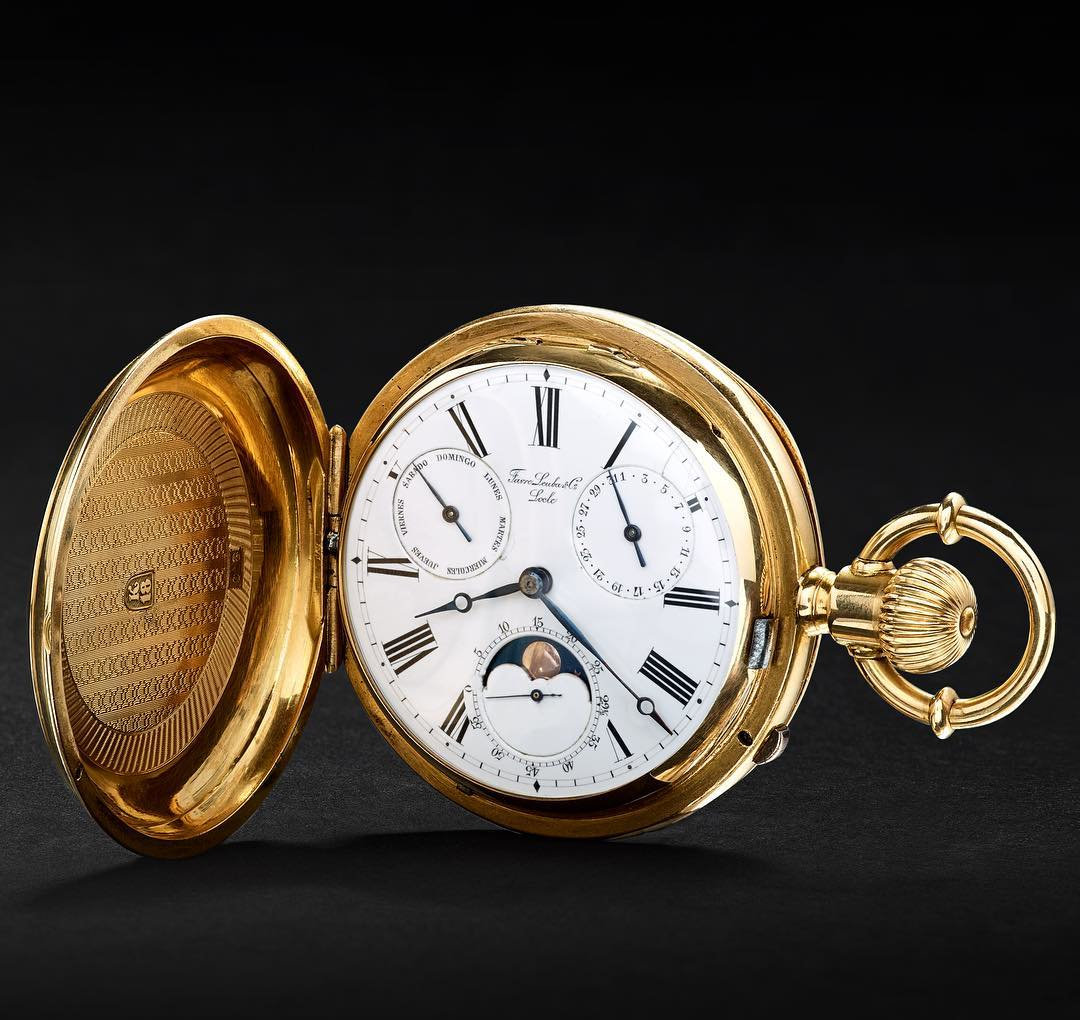
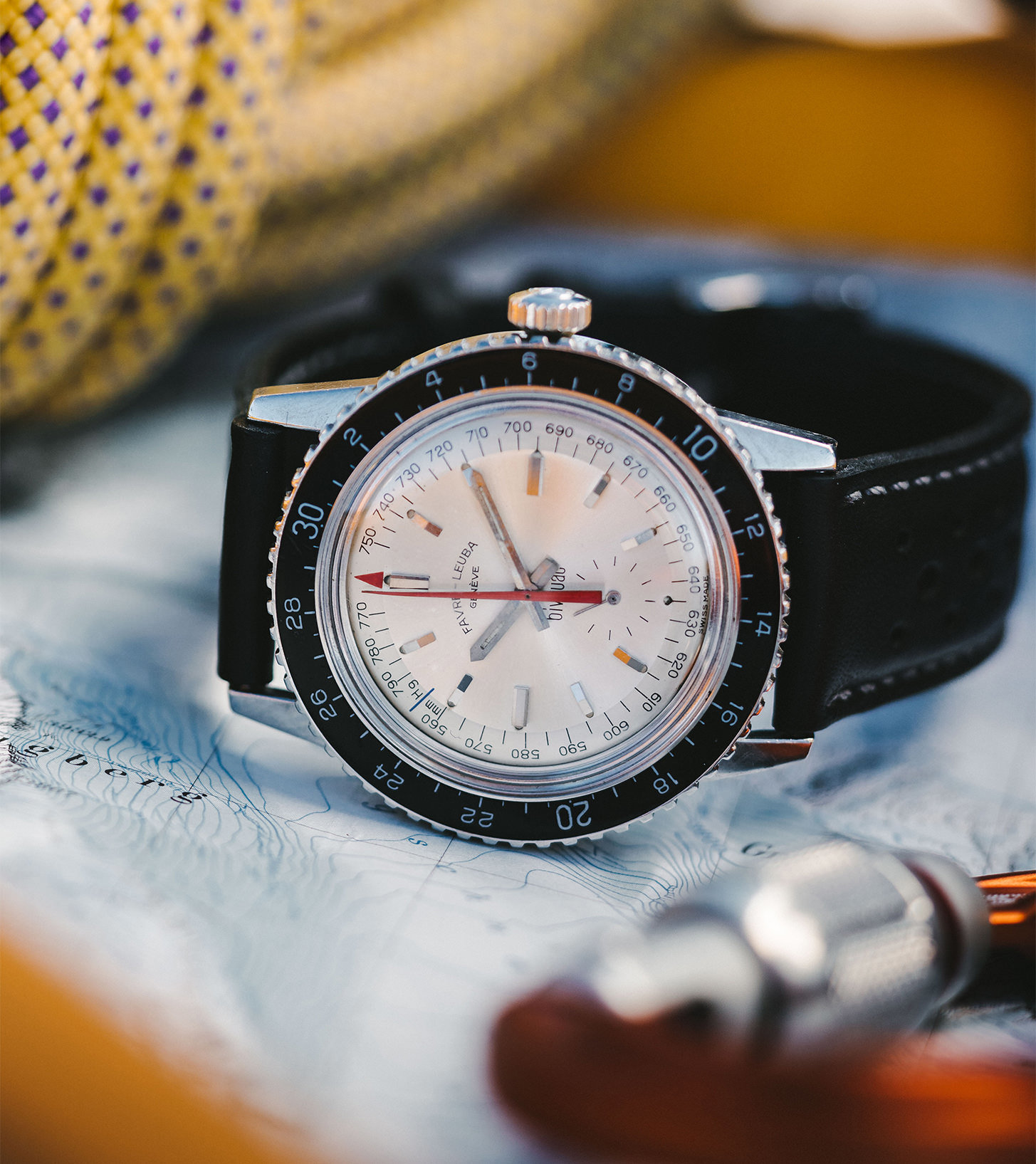
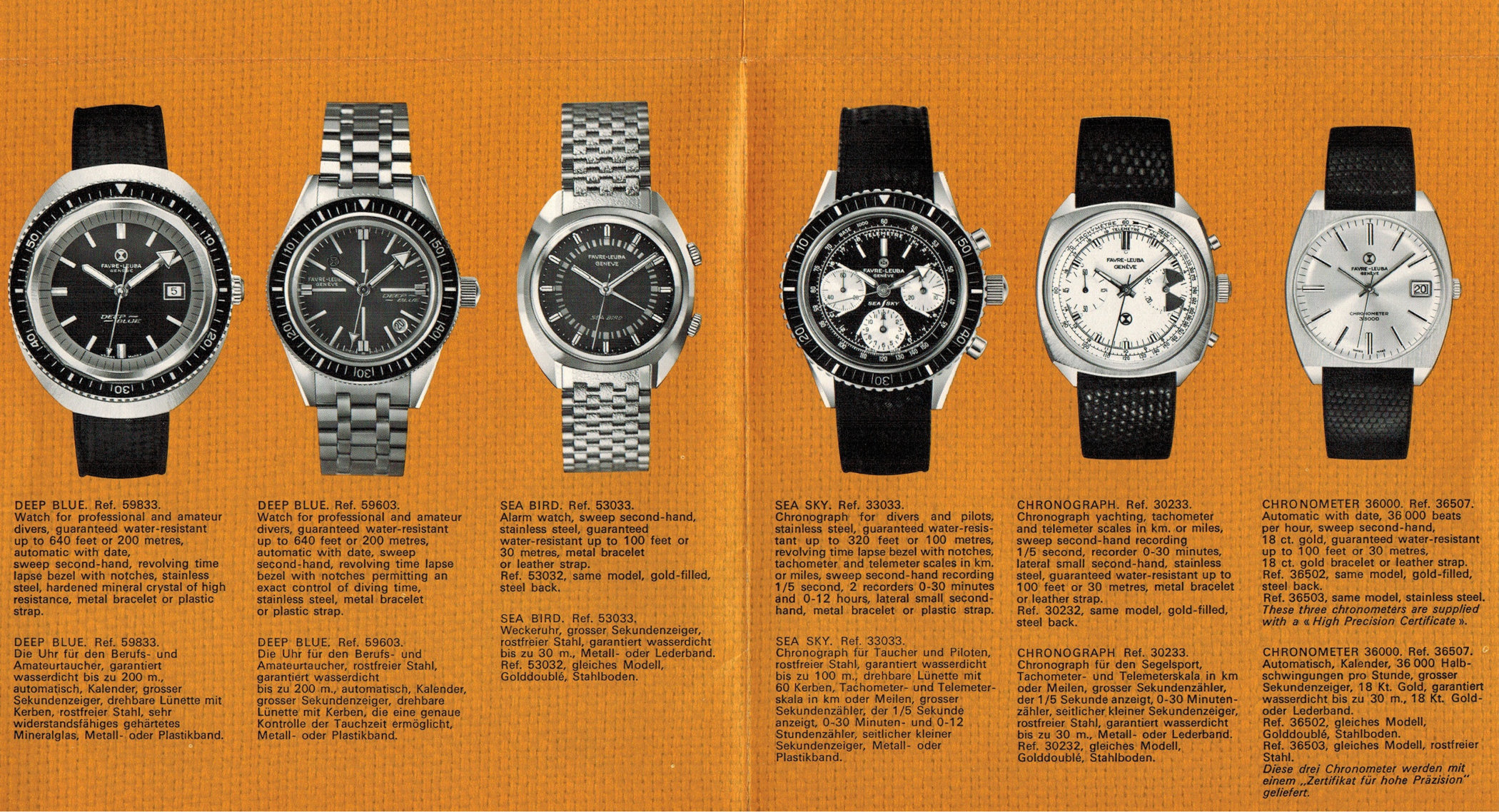


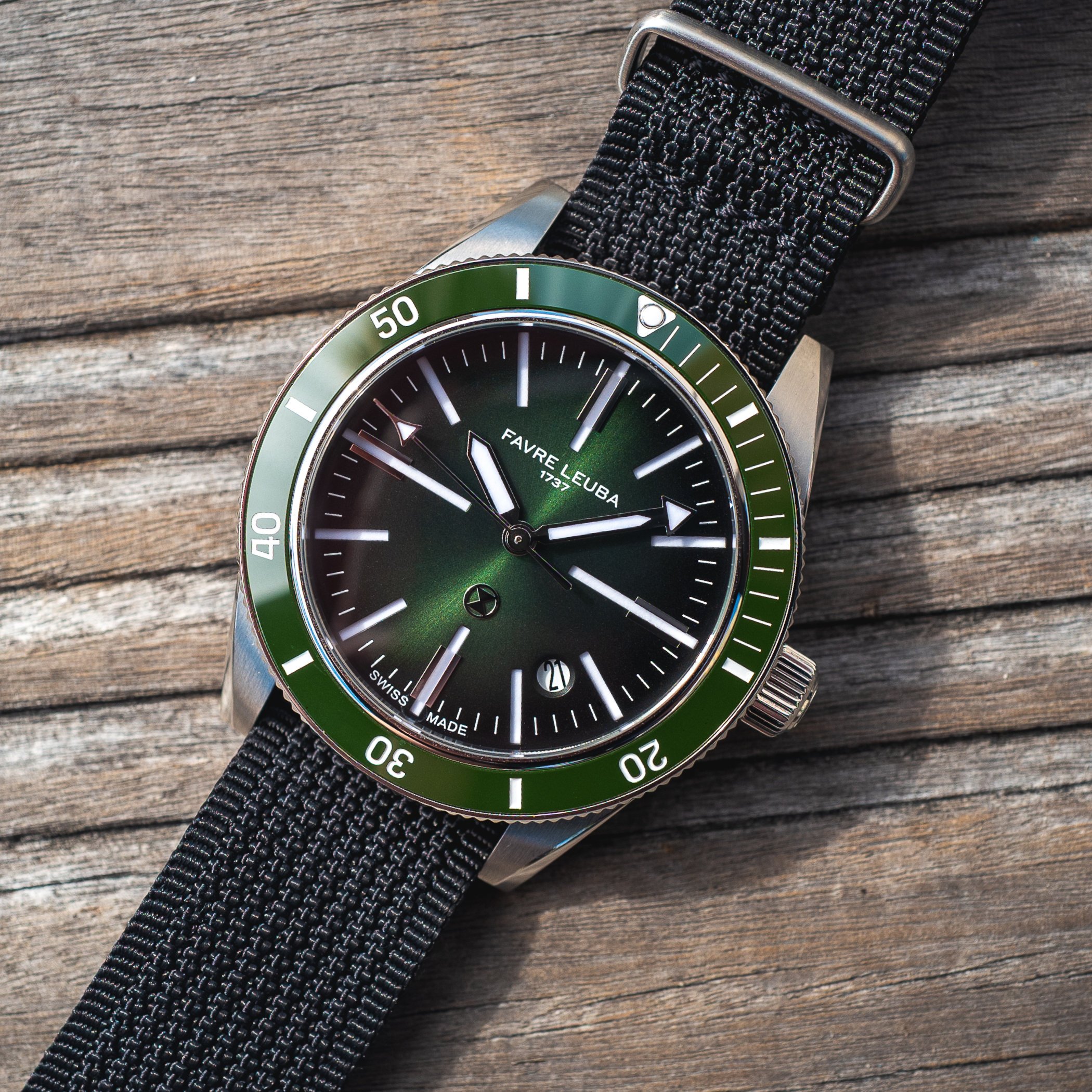
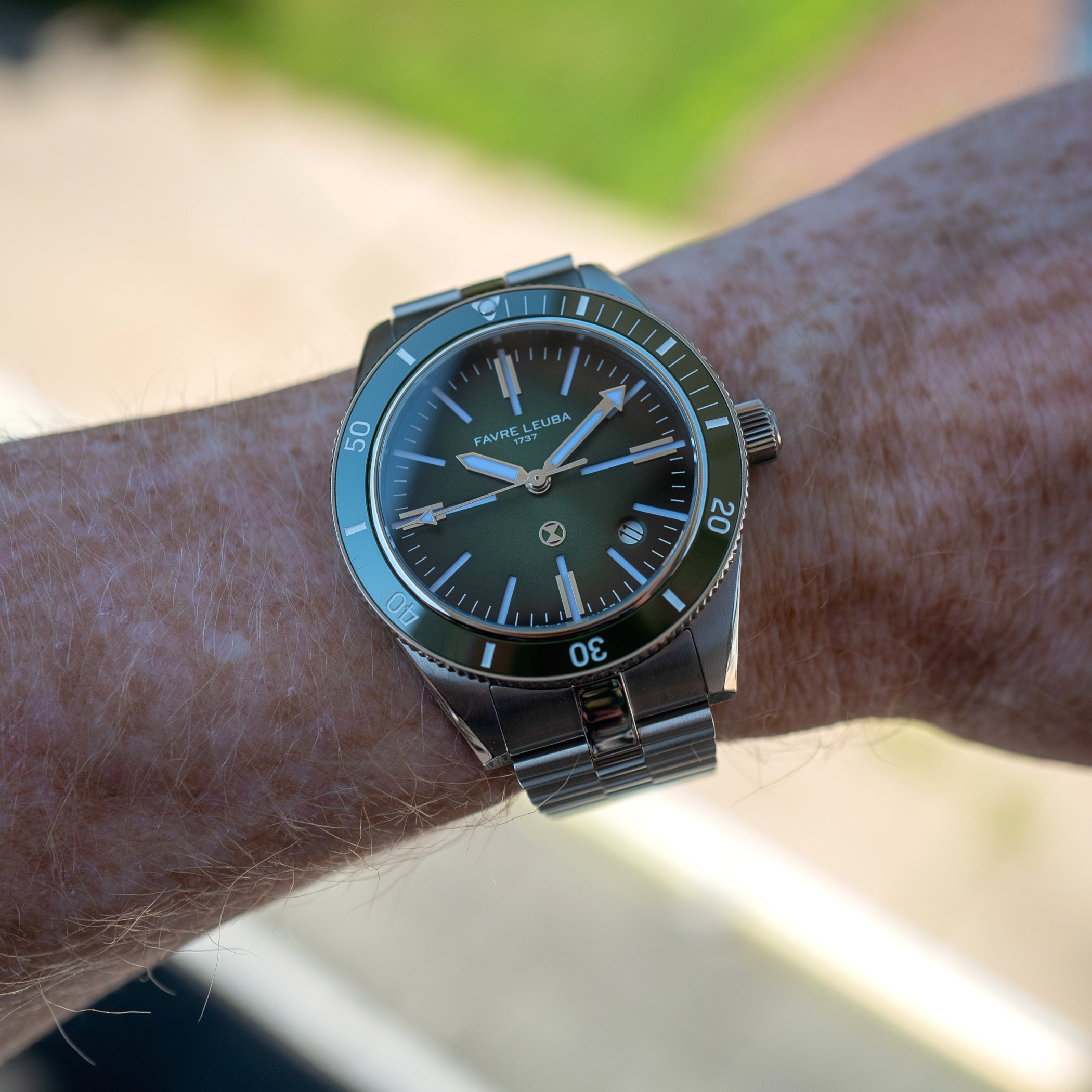
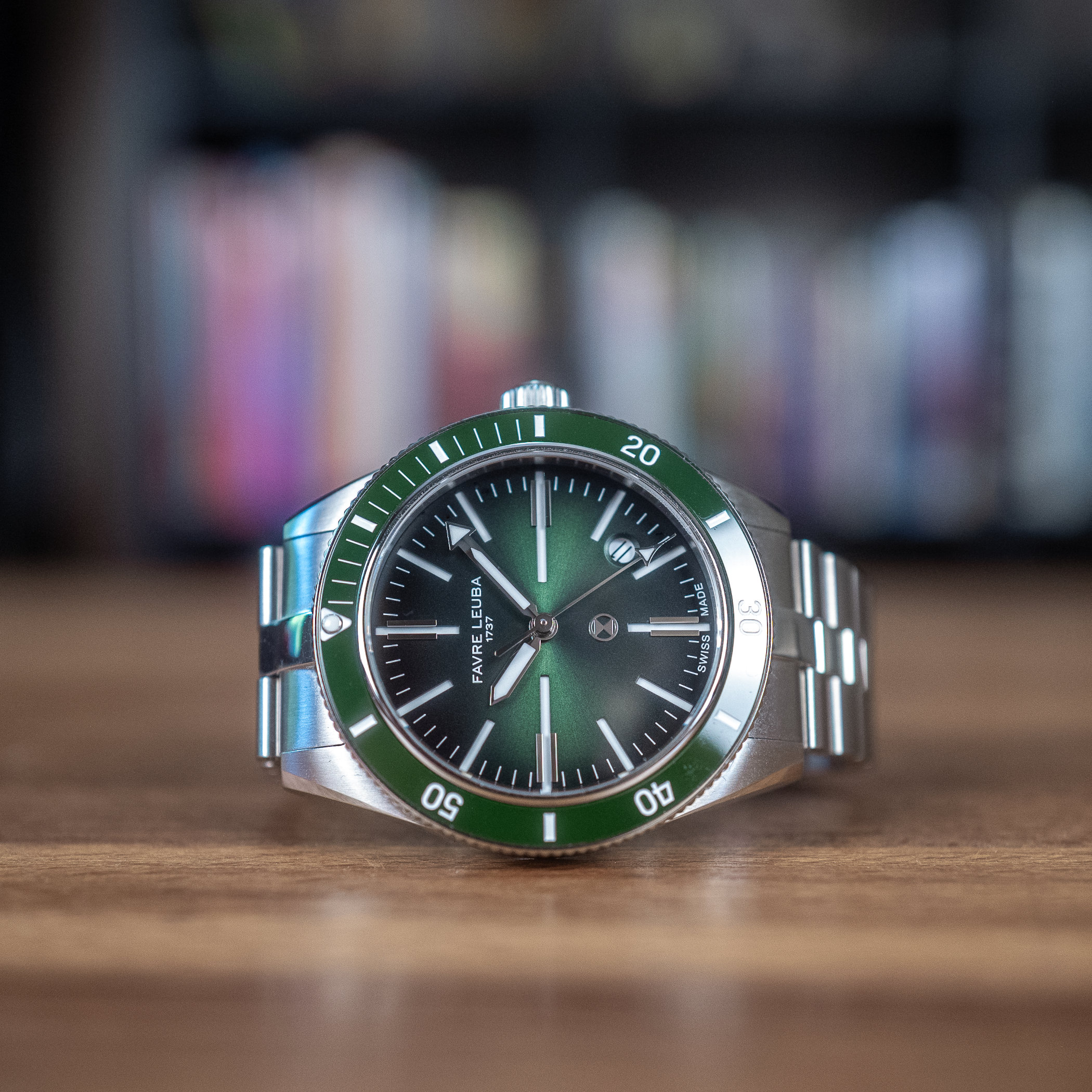
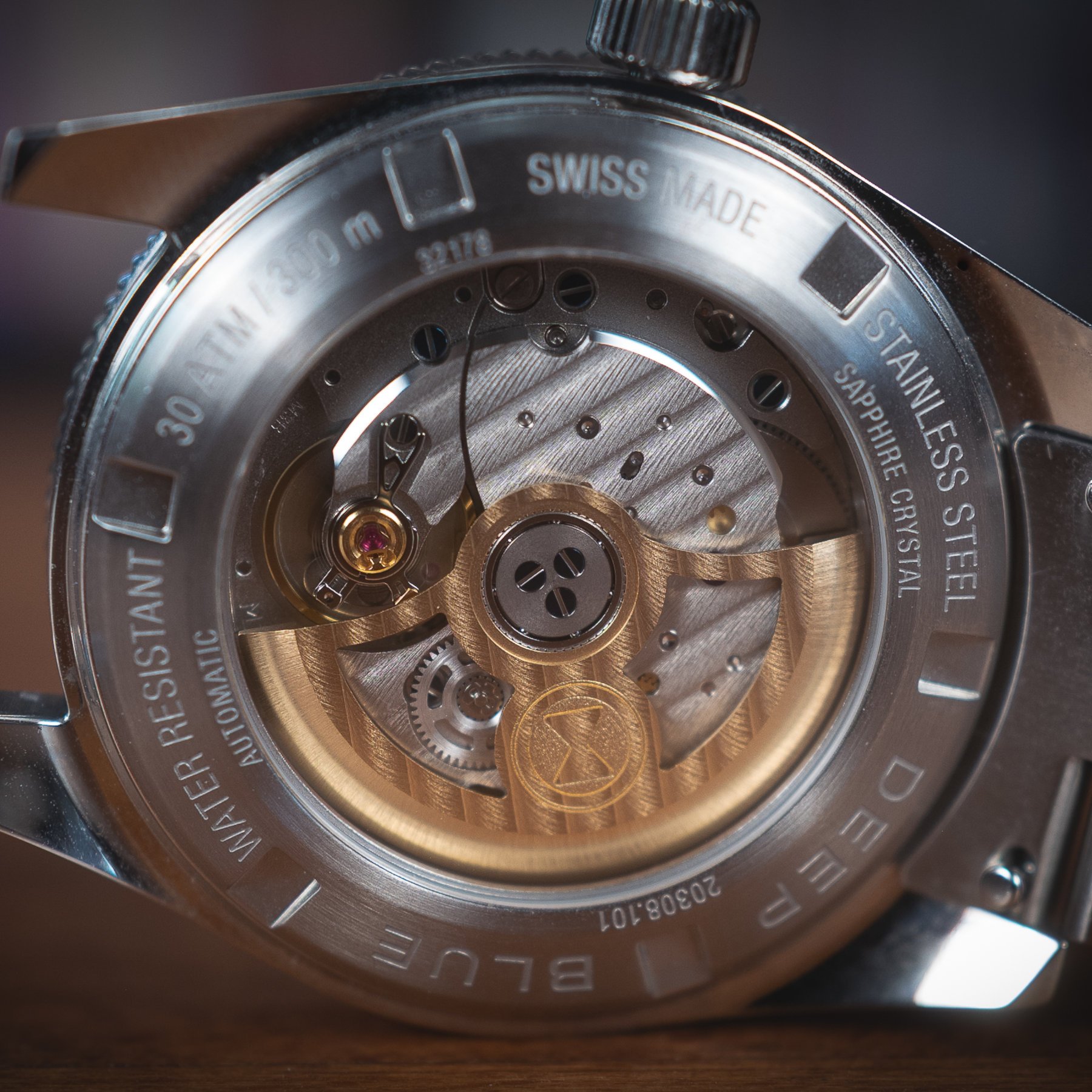
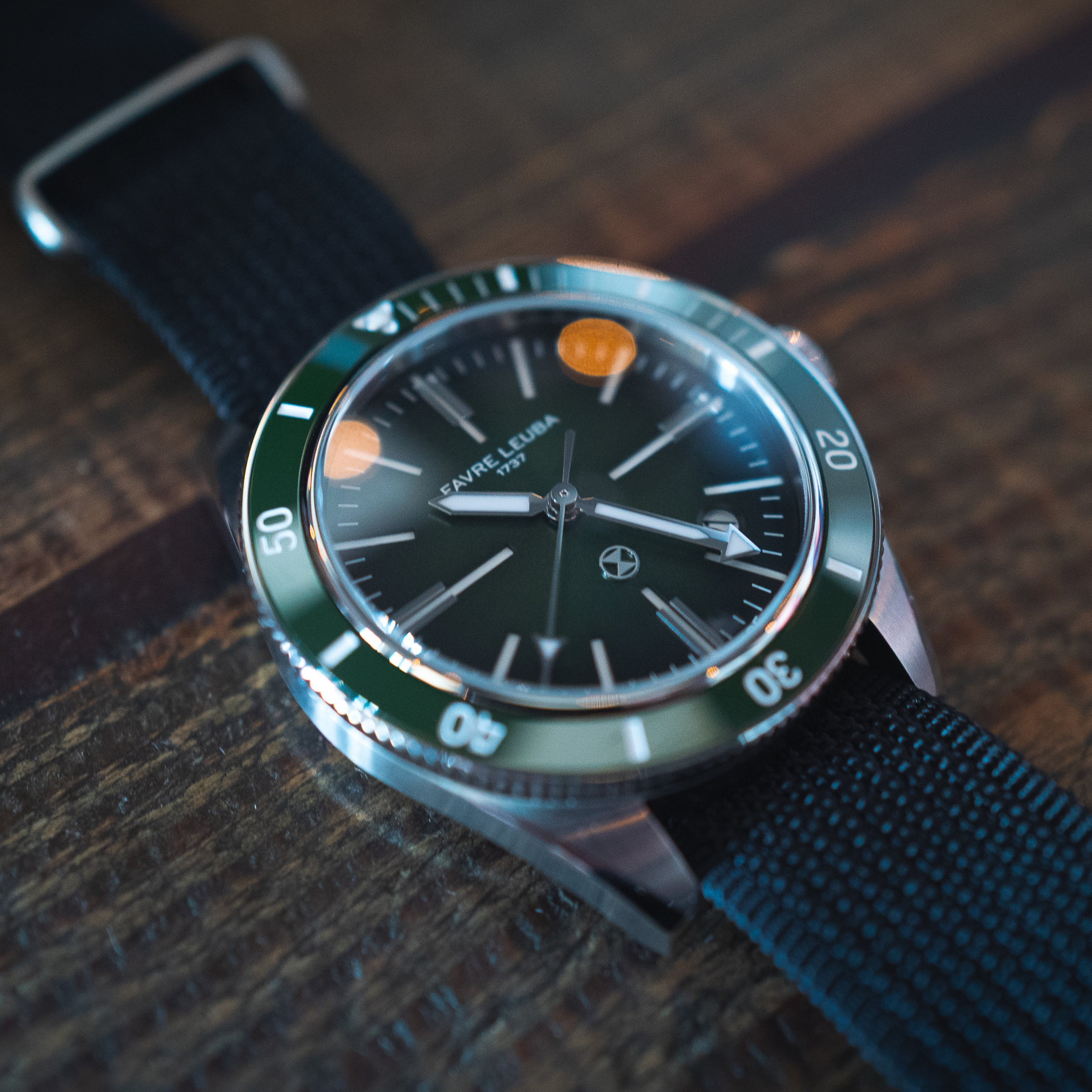
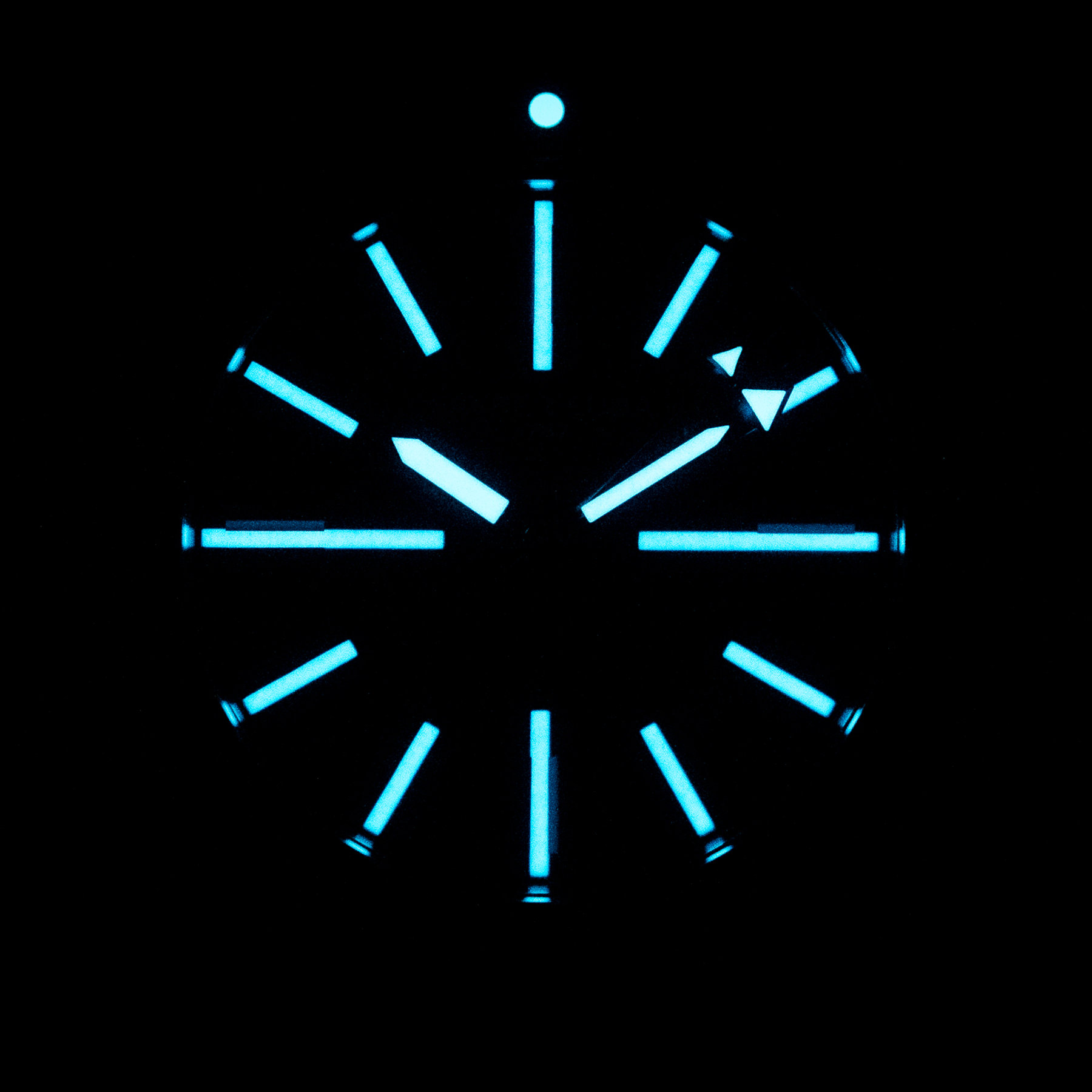
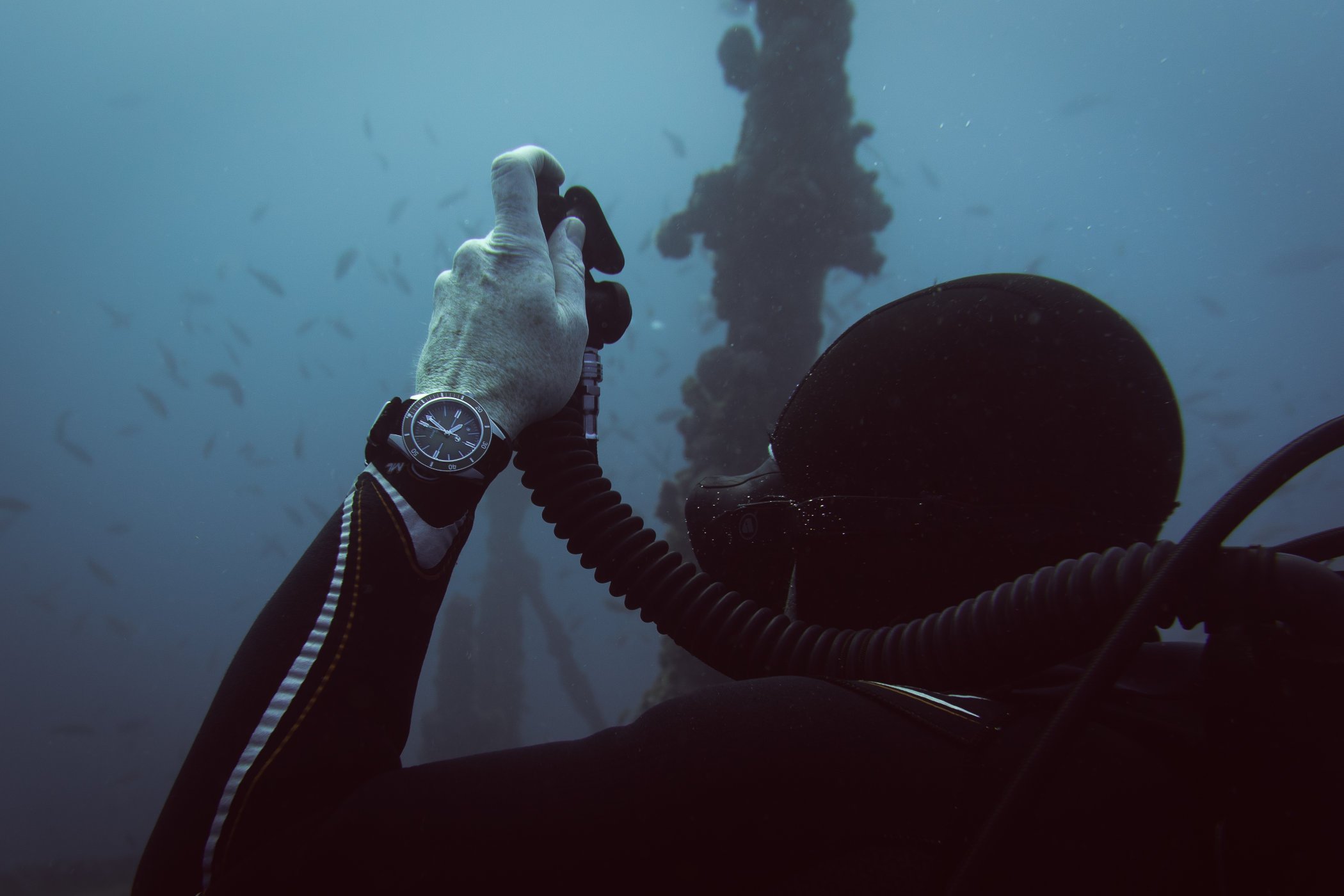
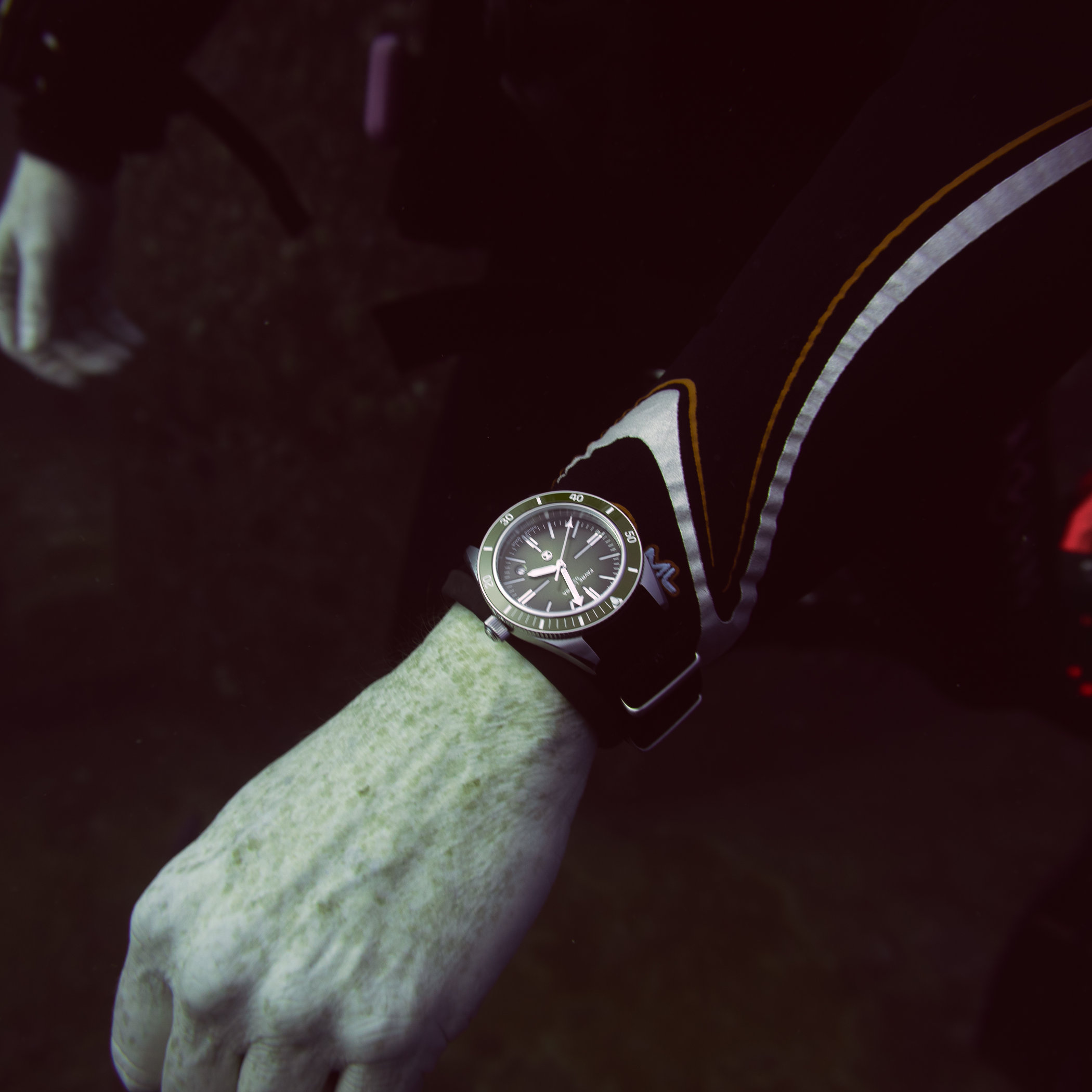
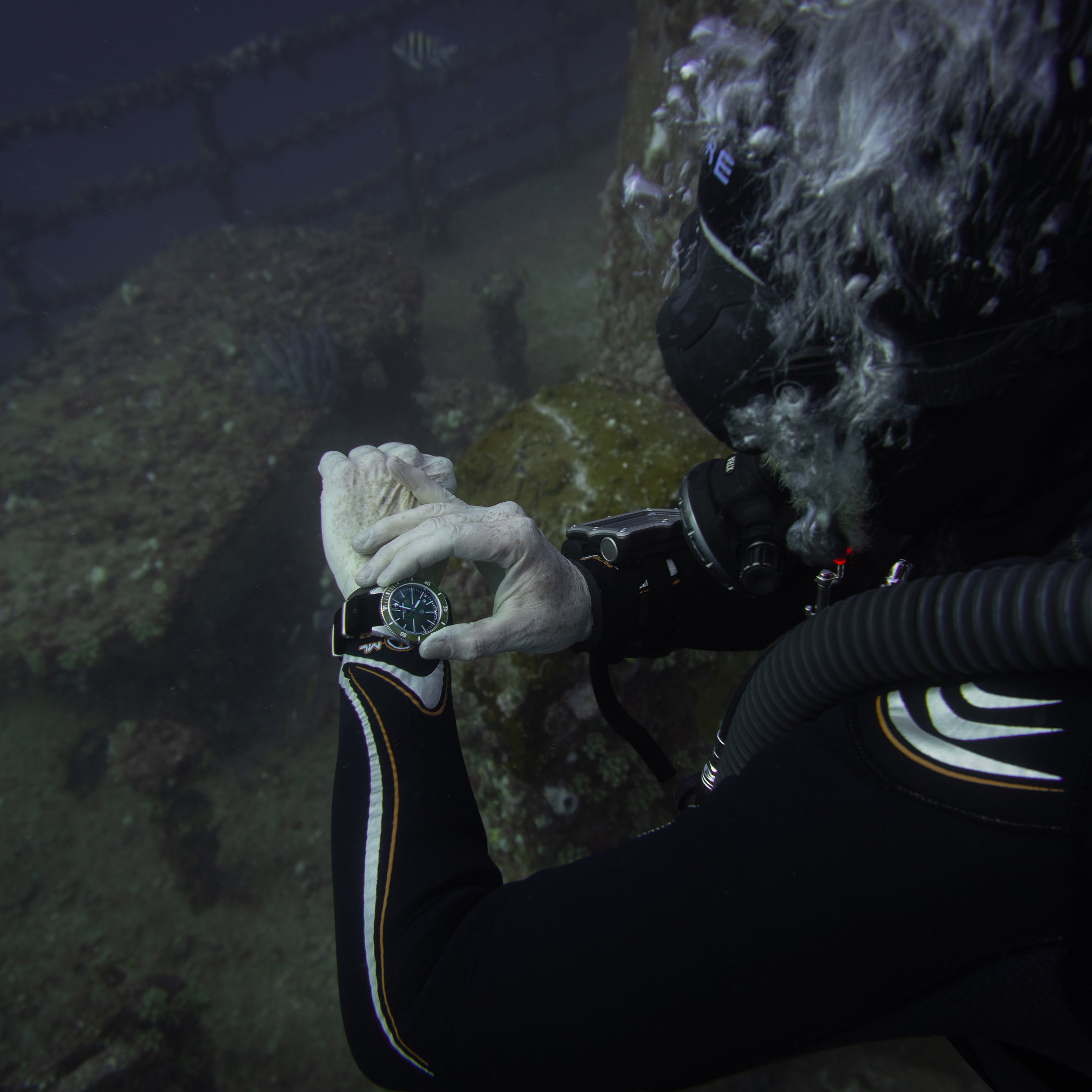
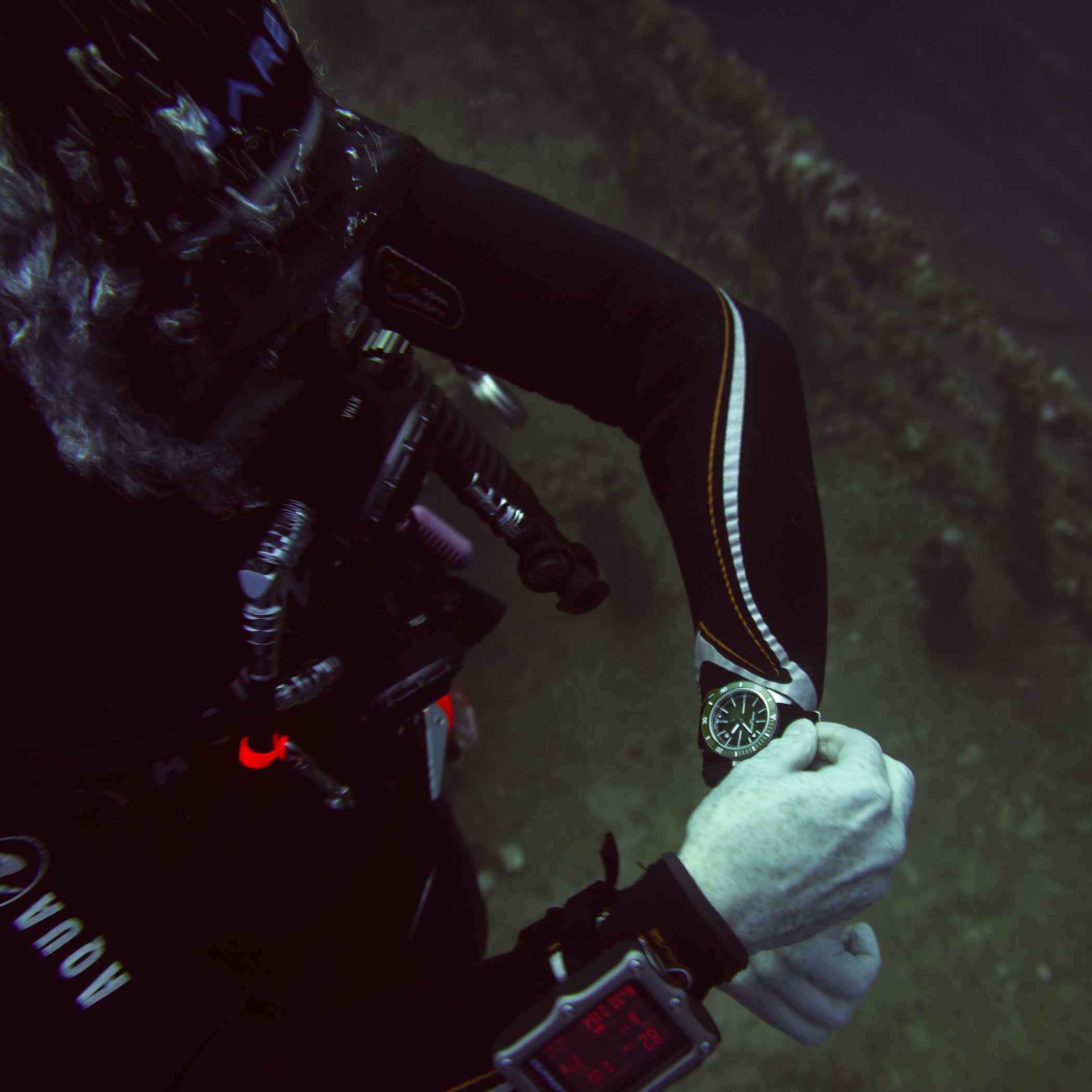
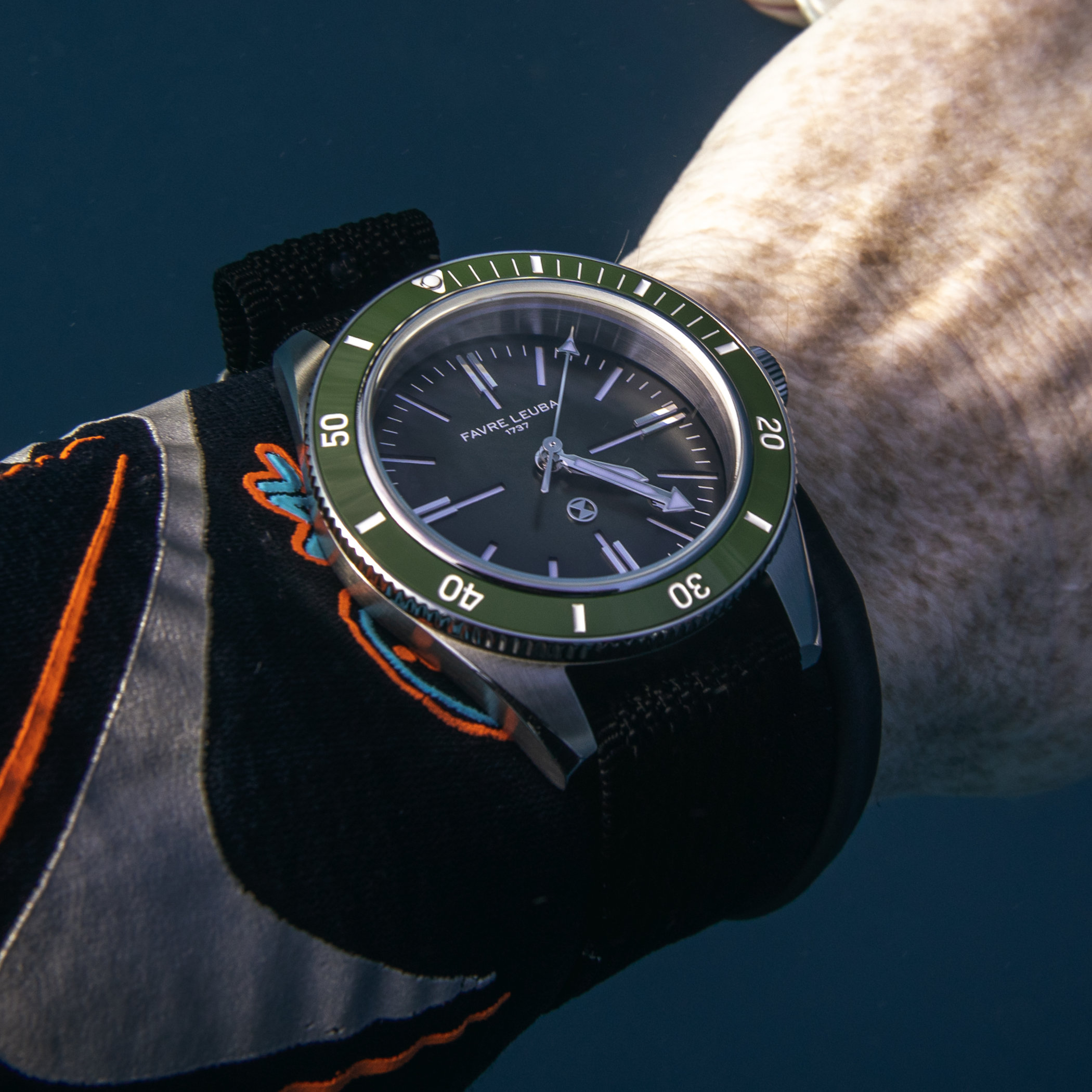
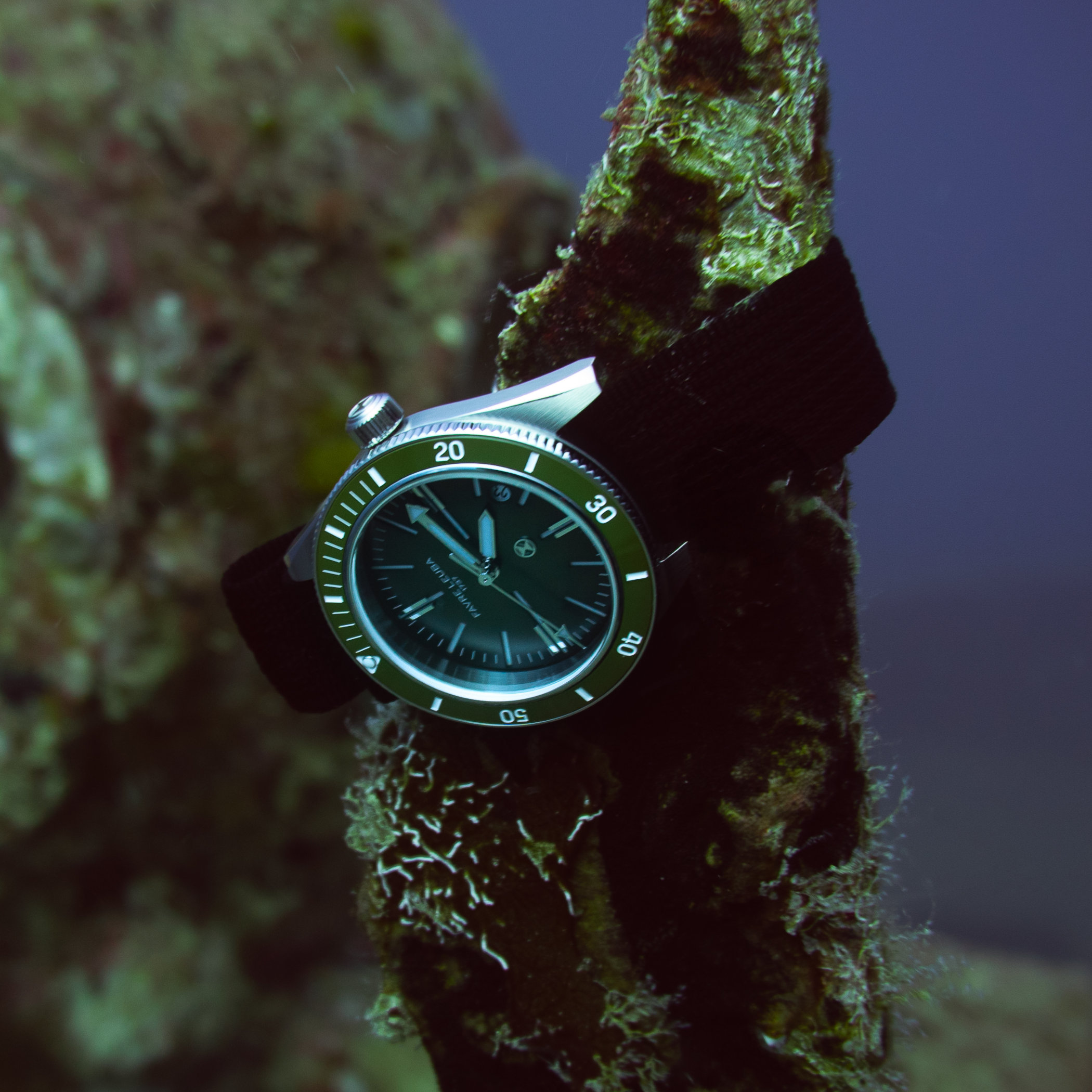
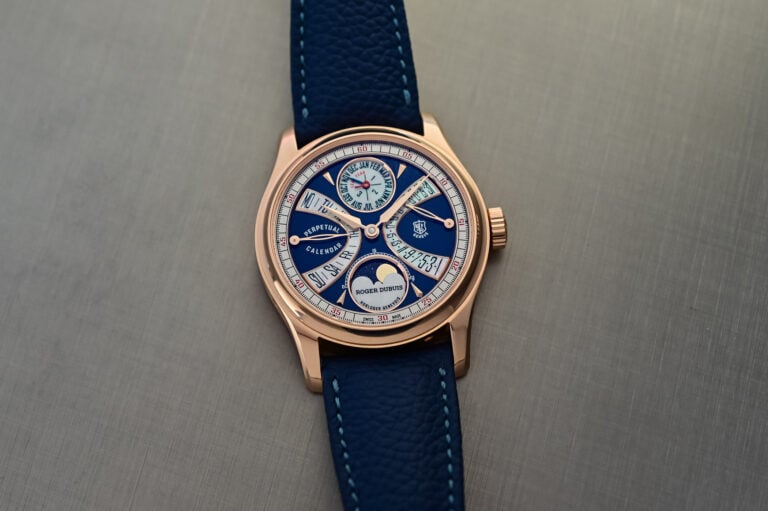
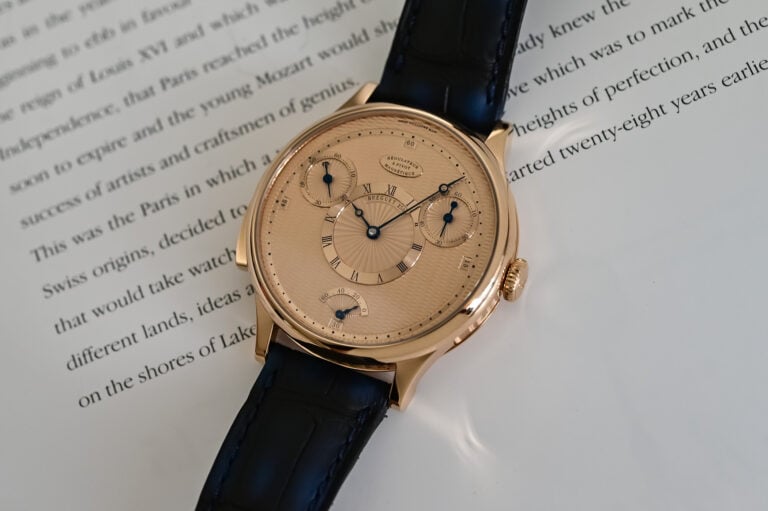
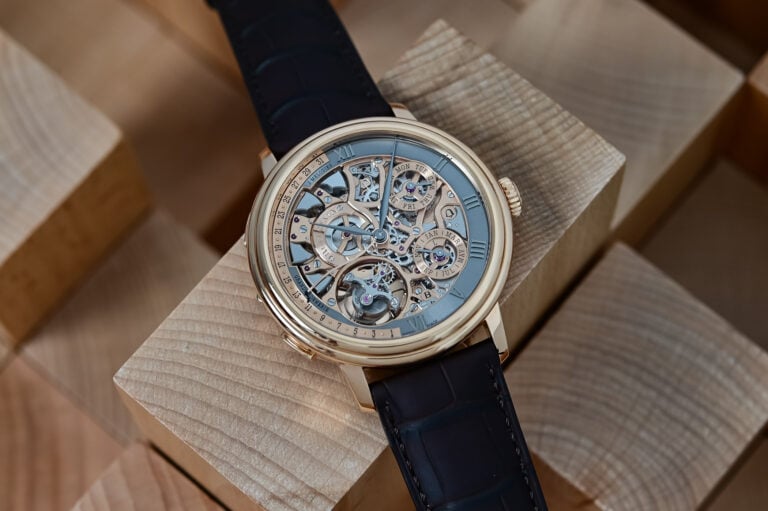
2 responses
And how will the impending tariffs impact the watches of the likes of the Favre-Leuba brand and other brands in their tier category? These brands may be hit hardest as they may not be able to sustain such a financial hit without passing a lot of it on and thereby jeopardizing their sustainability, while the higher end luxury crooks weather the storm and even prosper during it. What an institutionally malicious and rigged system!
Great alternative to eg Breitling Superocean. Compelled to give a shoutout to the FL HARPOON – perhaps the coolest dive watch on (or is that below) earth.
PS – to the Magoo: just make your stuff in the US (ie when will the penny drop?).